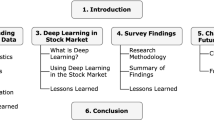Abstract
The purpose of this study is to examine the impact of the choice of cut-off points, sampling procedures, and business cycles on the forecasting accuracy of bankruptcy prediction models. A misclassification can result in an erroneous prediction resulting in prohibitive costs to firms, investors, and the economy. A salient feature of our study is that our analysis includes both parametric and nonparametric bankruptcy prediction models. A sample of firms from the Bankruptcy Research Database in the U.S. is used to evaluate the relative performance of the three most commonly used bankruptcy prediction models: Bayesian, Hazard, and Mixed Logit. Our results indicate that the choice of the cut-off point and sampling procedures affect the rankings of the three models. We show that the empirical cut-off point estimated from the training sample result in the lowest misclassification costs for all three models. When tests are conducted using randomly selected samples, and all specifications of type I costs over type II costs are taken into account, the Mixed Logit model performs slightly better than the Bayesian model and much better than the Hazard model. However, when tests are conducted across business-cycle samples, the Bayesian model has the best performance and much better predictive power in recent business cycles. This study extends recent research comparing the performance of bankruptcy prediction models by identifying under what conditions a model performs better. It also allays the concerns for a range of users groups, including auditors, shareholders, employees, suppliers, rating agencies, and creditors’ with respect to assessing corporate failure risk.



Similar content being viewed by others
Notes
Sampling procedures refer to how the training and holdout samples are constructed. In this study, we investigate two ways: 1. Samples are selected randomly and 2. Samples are constructed on time sequence.
This is the bankruptcy rate for each public company. Total bankruptcies for public companies in 2010 are 106, provided by BankruptcyData.com. The number of public companies is 20,201, provided by CreditRiskMonitor (http://www.crmz.com/).
The database can be accessed at http://lopucki.law.ucla.edu.
Excerpted from: http://www.nber.org/cycles/cyclesmain.html.
References
Altman EI, McGough TP (1974) Evaluation of a company as a going concern. J Acc 50–57
Altman EI, Haldeman RG, Narayanan P (1977) ZETA analysis: a new model to identify bankruptcy risk of corporations. J Banking Finance 1:29–54
Beaver WH, McNichols MF, Rhie J-W (2005) Have financial statements become less informatve? Evidence from the ability of financial ratios to predict bankruptcy. Rev Acc Stud 10:93–122
Begley J, Ming J, Watts S (1996) Bankruptcy classification errors in the 1980s: an empirical analysis of Altman’s and Ohlson’s models. Rev Acc Stud 1:267–284
Bellovary JL, Giacomino D, Akers M (2007) A review of bankruptcy prediction studies: 1930 to present. J Financ Educ Winter:33
Grice JS, Dugan MT (2001) The limitations of bankruptcy prediction models: some cautions for the researcher. Rev Quant Finance Acc 17:151–166
He Z (2007) Incorprating alpha uncertainty into portfolio decisions: a bayesian revisit of the Treynor-Black model. J Asset Manag 8(3)
Hopwood WS, McKeown JC, Mutchler JP (1994) A reexamination of auditor versus mdel accuracy within the context of the going-concern opinion decision. Contemp Acc Res 10:409–431
Johnson, Wichern DW (2007) Applied multivariate statistical analysis. Pearson Education Inc., pp 575–649
Jones S, Hensher DA (2004) Predicting firm financial distress: a mixed logit model. Acc Rev 79(4):1011–1038
Katz S, Lilien S, Nelson B (1985) Stock market behavior around bankruptcy model distress and recovery predictions. Financ Anal J 70–73
Martin D (1977) Early warning of bank failure. J Banking Finance 1:249–276
McKee TE (2003) Rough sets bankruptcy prediction models versus auditor signaling rates. J Forecast 22:569–586
Ohlson JA (1980) Financial ratios and the probabilistic prediction of bankruptcy. J Acc Res 18(1):109–131
Platt HD, Platt MB (2002) Predicting corporate financial distress: reflections on choice-based sample bias. J Econ Finance 26(2):184–199
Sarkar S, Sriram RS (2001) Bayesian models for early warning of bank failures. Manag Sci 47:1457–1475. doi:10.1287/mnsc.47.11.1457.10253
Shumway T (2001) Forecasting bankruptcy more accuratly: a simple hazard model. J Bus 74(1)
Sun L, Shenoy PP (2007) Using Bayesian networks for bankruptcy prediction: some methodological issues. Eur J Oper Res 180(2):738–753
Tam KY (1991) Neural network models and the prediction of bank bankruptcy. OMEGA 19(5):429–445
Thomson JB (1991) Predicting bank failures in the 1980s. Econ Rev Fed Reserve Bank Clevel 27:9–20
Weiss LA, Capkun V (2004) The impact of incorporating the cost of errors into bankruptcy prediction models (Working Paper)
West RC (1985) A factor-analytic approach to bank condition. J Banking Finance 9:253–266
Whalen G, Thomson JB (1988) Using financial data to identify changes in bank condition. Econ Rev Fed Reserve Bank Clevel 24:17–26
Wilson RL, Sharda R (1994) Bankruptcy prediction using neural networks. Decis Support Syst 11:545–557
Zmijewski ME (1984) Methodological issues related to the estimation of financial distress prediction models. J Acc Res 22:59–82
Author information
Authors and Affiliations
Corresponding author
Rights and permissions
About this article
Cite this article
Trabelsi, S., He, R., He, L. et al. A comparison of Bayesian, Hazard, and Mixed Logit model of bankruptcy prediction. Comput Manag Sci 12, 81–97 (2015). https://doi.org/10.1007/s10287-013-0200-8
Received:
Accepted:
Published:
Issue Date:
DOI: https://doi.org/10.1007/s10287-013-0200-8




